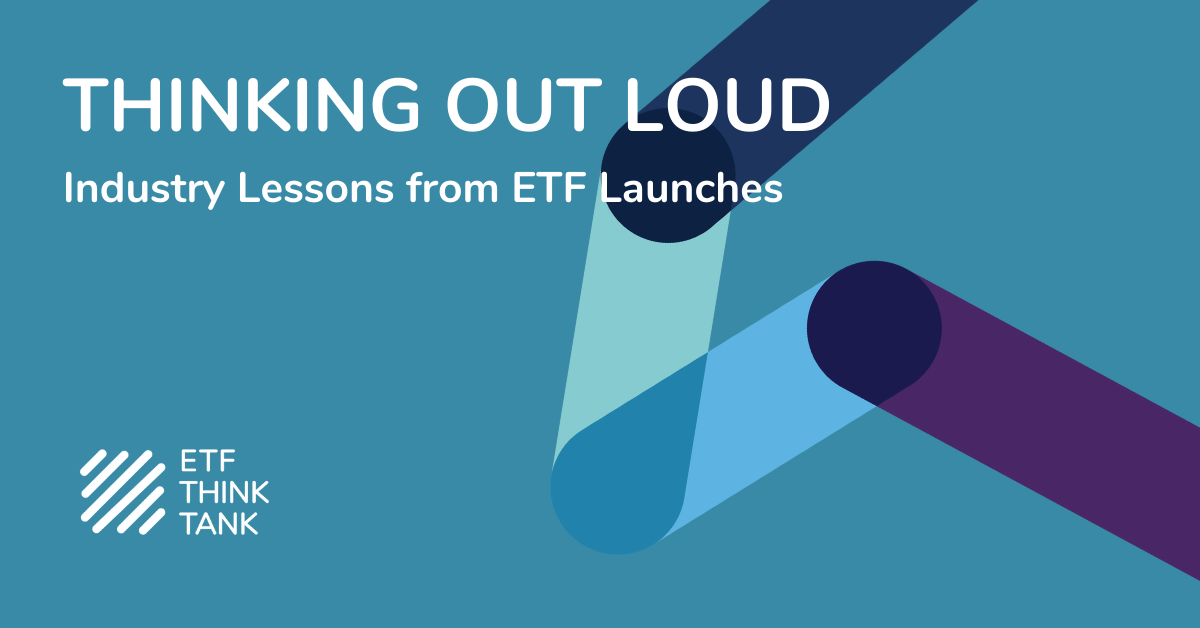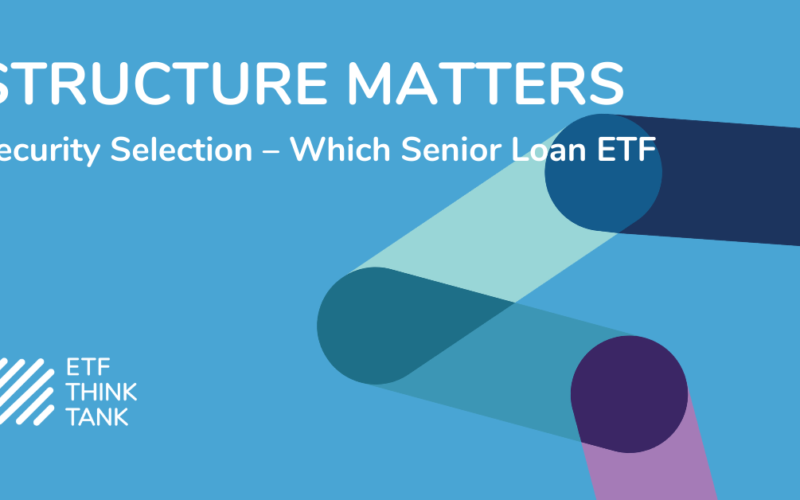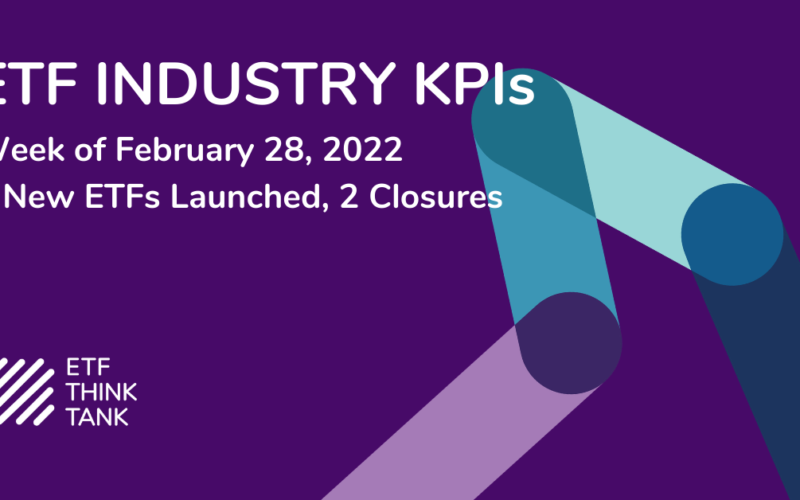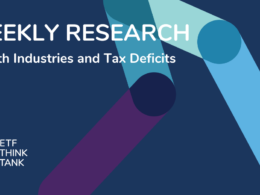ETF launches can tell us a lot about the state of the ETF industry. When we look at the new ETFs brought to market so far in 2022, three things stand out:
- The pace of ETF product development is like nothing we’ve seen before.
So far this year, we are averaging about 10 new ETF launches a week. Almost 80 new funds have come to market in a pace that, if it were to continue, would mean more than 500 new ETF launches this year – a record.
The volume of ETF launches has been such that it has far outnumbered ETF closures 5 to 1. Consider that just two years ago, we were looking at a 1-to-1 open to close ratio. (We track these stats weekly in our Weekly KPI report.)
This could suggest that, as an industry, we remain fully bullish on the ETF wrapper itself. If you assume that every launch expects to find an asset base, this pace of launches means issuers are confident that investor appetite for ETFs will only grow stronger. Asset flows into ETFs in the past few years would confirm that. The ETF industry is strong.
But this widening gap between launches and closures should also give us pause as investors. Innovation and regulation, such as the “ETF Rule”, may have lowered the bar of entry to the ETF market, making it easier for asset managers to launch product, but the real challenge isn’t entering the market. It’s staying alive. The more funds come to market competing for investor attention, the harder that challenge becomes.
We can only expect that at some point the other part of that ratio – ETF closures – picks up pace as well.
- Thematic ETFs are the favorite flavor du jour.
At the ETF Think Tank, we categorize and segment each ETF in our in-house database, which powers our ETF tools and research. In our methodology, we first define an ETF as thematic when no single sector commands at least 80% of the portfolio.
Among the launches this year, after you exclude 20 ETFs that are either commodities, fixed income or volatility futures-based strategies, you will find that 39 new ETFs are thematic strategies. That’s 66% of the equity-based ETF launches this year.
It gets more interesting further down the categorization line. When we look for what we call a fund’s “objective attribute,” which looks to understand what the ETF actually sets out to do, the variety of thematic flavors really gets dizzying.
In most cases this year, that attribute isn’t a factor or a style or even an alternative weighting scheme. Instead, it’s some type of exposure that’s just different enough to not fit other investment objectives we have defined.
We aren’t exactly awash with first-of-a-kind ETFs in a wave of never-before-seen innovation. We are, however, faced with a lot of one-of-a-kind twists on similar ideas that are just alike enough and different enough to keep challenging segmentation efforts.
The implication here is twofold: First, it means more granular choice for investors, which is a good thing if granularity is your thing. Secondly, it means due diligence is an increasingly thorny endeavor. At the end of the day, advisors and investors are searching for the right ETF for a specific goal, and as thematic ETFs get more and more creative, the homework only gets harder. Apples-to-apples ETF comparisons are increasingly a thing of the past.
- The ETF industry may be almost 30 years old, but there’s still such a thing as new-to-ETFs providers.
We ended 2020 with 170 different issuer brands. Today, we have 258. The issuer-provider market has grown 50% in 14 months.
A lot of these new ETF issuers aren’t new to the business of asset management. Many well-established mutual fund shops are just now converting or launching ETFs for the first time.
But there’s also a lot of new entrepreneurial blood in the ETF industry. These new-to-ETF issuers are trying to innovate in product and/or price, looking for a niche to explore. Some of these firms are truly breaking new ground, but they know too well that a great idea can only go so far without a strong asset base.
Success sometimes comes down to opportune timing and a little bit of luck – things you can’t really control. But the good news is that when it comes to investor adoption, ETF asset flows do offer newcomers a glimmer of hope.
For the last decade or so, the biggest three providers – iShares, Vanguard and State Street – have commanded at least 80% of ETF assets any given year, sometimes as much as 90%. Today, their market share sits at 78%.
If you’re an issuer, you know this well: in the asset gathering race, every inch counts. These numbers suggest that smaller and newer issuers are picking up some inches, putting up a good fight for space in an industry that just keeps on growing. It will be interesting to watch which ETF providers have staying power.
Disclosure
All investments involve risk, including possible loss of principal.
This material is provided for informational purposes only and should not be considered an individualized recommendation or personalized investment advice. The investment strategies mentioned may not be suitable for everyone. Each investor needs to review an investment strategy for his or her own particular situation before making any investment decision.
All expressions of opinion are subject to change without notice in reaction to shifting market conditions. Data contained herein from third party providers is obtained from what are considered reliable sources. However, its accuracy, completeness or reliability cannot be guaranteed.
Examples provided are for illustrative purposes only and not intended to be reflective of results you can expect to achieve.
The value of investments and the income from them can go down as well as up and investors may not get back the amounts originally invested, and can be affected by changes in interest rates, in exchange rates, general market conditions, political, social and economic developments and other variable factors. Investment involves risks including but not limited to, possible delays in payments and loss of income or capital. Neither Toroso nor any of its affiliates guarantees any rate of return or the return of capital invested. This commentary material is available for informational purposes only and nothing herein constitutes an offer to sell or a solicitation of an offer to buy any security and nothing herein should be construed as such. All investment strategies and investments involve risk of loss, including the possible loss of all amounts invested, and nothing herein should be construed as a guarantee of any specific outcome or profit. While we have gathered the information presented herein from sources that we believe to be reliable, we cannot guarantee the accuracy or completeness of the information presented and the information presented should not be relied upon as such. Any opinions expressed herein are our opinions and are current only as of the date of distribution, and are subject to change without notice. We disclaim any obligation to provide revised opinions in the event of changed circumstances.
The information in this material is confidential and proprietary and may not be used other than by the intended user. Neither Toroso or its affiliates or any of their officers or employees of Toroso accepts any liability whatsoever for any loss arising from any use of this material or its contents. This material may not be reproduced, distributed or published without prior written permission from Toroso. Distribution of this material may be restricted in certain jurisdictions. Any persons coming into possession of this material should seek advice for details of and observe such restrictions (if any).












